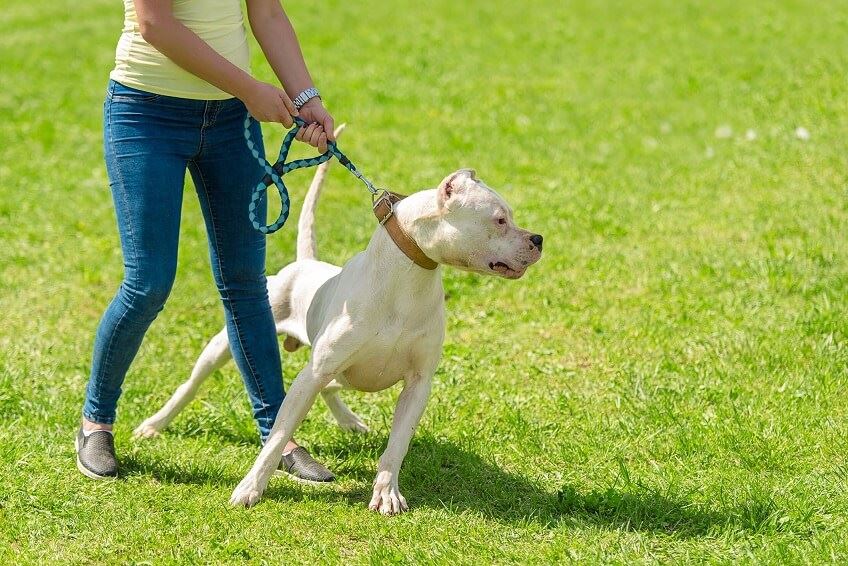Can a Dog Bite Get Infected?
Even the gentlest dogs can bite if they are harmed, frightened, or overexcited. No matter the size or breed of the dog, a bite from any animal can cause open wounds on the skin, leading to an increased risk of infection. It is important to understand the risks associated with a dog bite infection and to take the necessary steps to protect your health and your rights.
Risks of Infection After a Dog Bite
In general, infections occur when bacteria, germs, or other spreadable diseases can enter the body, usually using an open gash on the skin. According to the Academy of Pediatrics, infection occurs in about 10 to 15 percent of dog bites. Dog bites that go untreated without proper cleaning and medical care are at increased risk of developing infections, which can be passed to another through bacteria.
Common Indications of a Dog Bite Infection
How can you tell if a dog bite gets infected?
Below, we break down some of the signs of a serious issue by specific infection. We want to provide you with a quick snippet of some symptoms to look out for if you or a loved one was the target of a dog attack:
- Oozing fluid from the wound
- Loss of sensation in the region of the dog bite
- Swollen lymph nodes
- Night sweats
- Unusual fatigue
- Muscle weakness or tremors
- Hardness or lump under skin after dog bite
If the victim is experiencing any of the above symptoms after a dog bite, we encourage you to get medical help as soon as possible, and legal expertise if necessary. An infected dog bite should be taken seriously.
Were you injured in a dog bite incident in the Fresno, CA area and believe the other person might be at fault? Get your questions answered from Fowler | Helsel | Vogt by calling us at (559) 900-1280.
Below, we discuss a few common types of infections that can develop from dog bite injuries.
Dog Bite Infection: Rabies
Rabies is a vaccine-preventable viral infection that is transmitted through a scratch or bite, usually from an infected animal. According to the World Health Organization (WHO), the virus ultimately “spreads to the central nervous system” and leads to “progressive and fatal inflammation of the brain and spinal cord.”
Early symptoms of the disease include mild fevers, headaches, lethargy, and general weakness. As the disease worsens, symptoms will get progressively worse and may include:
- Insomnia
- Nausea and vomiting
- Anxiety
- Confusion
- Partial paralysis
- Hyperactivity
- Hallucinations
- Hydrophobia (fear of water)
After the dog bite, animal control will most likely monitor the animal for up to 10 days to determine if signs of rabies are present. If signs do exist, you should get tested and vaccinated immediately to prevent or fight a rabies infection. A bite from a rabies-infected dog is almost always fatal. If you need to seek legal counsel, call a dog bite attorney from our personal injury law firm.
Dog Bite Infection: Staph and Strep Infections
Dog bites can lead to staph infections and strep infections; both serious and potentially fatal conditions caused by staphylococcus or streptococcus bacteria. Common symptoms include:
- Oozing blisters
- Boils
- Joint swelling
- Fevers
If you or a loved one is experiencing such symptoms after a dog bite accident, be sure to seek medical attention immediately. The doctor may have to drain the area around the patient’s bite and treat them with antibiotics to halt the infection from further spread.
Dog Bite Infection: Cellulitis
Pasteurella multocida and pasteurella canis are bacterial organisms that live in the mouths of many dogs. When passed to humans through a bite, they can lead to a serious infection known as cellulitis. Symptoms of this infection typically manifest within the first 24 hours of the bite and include:
- Redness
- Swelling
- Tenderness around the bite
- Discharge of pus from the wound
Cellulitis spreads fast, especially in children. If left untreated, symptoms can grow worse and lead to:
- Infection in the joints, bones, and tendons
- Weakness
- Numbness or tingling
- Skin appearing black
- Pneumonia
- Eye infections
- Urinary tract infections
- Meningitis
- Blood infections
Typically, treating cases of cellulitis requires a 7 to 10-day treatment period with anti-bacterial medicines, such as amoxicillin and penicillin.
Protecting Victims of Dog Bite Injuries & Infections
Even a dog bite that is seemingly “minor” can turn into a severe infection with disastrous consequences. If you’re injured in a dog bite accident, you must seek medical attention right away so you can get a proper diagnosis and treatment. Certain factors may increase the risk of infection, scarring, or other severe conditions, including:
- Not thoroughly washing and cleaning the affected area
- If the bite caused a deep wound
- A weakened immune system
- If the bite caused a fracture or other damage

What if I Have a Lump Under My Skin After a Dog Bite?
One common concern that dog bite victims experience is a lump that forms under the skin where the dog bite occurs. The lump is a result of scar tissue that has developed under the skin. If this lump is resulting in pain, you should seek immediate medical attention. In some cases, a healthcare professional will need to drain the area that is causing you pain and irritation.
Although not encouraged, if you are unable to or not desire to see a doctor immediately, observe the lump daily and document the following:
- Measurements of the lump
- Pictures of the lump
If you observe any difference, record the details and bring this information to the doctor. It is crucial to also seek advice from a dog bite attorney to make sure that you are documenting the necessary information needed for taking to court.
Self-Treatment Steps to Prevent Infection from a Dog Bite
Medical attention after a dog bite is critical to prevent infection and any subsequent repercussions from the wound. Once the dog pierces the flesh of the person, bacteria can enter the body thus causing an infection that can result in tetanus, rabies, or sepsis.
There are some treatment steps you can take immediately following a bite to improve the healing process, however:
- Wash the wound with soap and warm water - this can help remove bacteria to prevent infection
- Hold a clean cloth over the wound to slow the flow of blood
- Apply an antibacterial ointment to the wound
- Cover with a sterile bandage
- Keep an eye on the wound for any sign of infection
Some signs of infection include:
- Redness
- Swelling
- Warm to the touch
All dog bite wounds should be taken seriously because of the potential for a bacterial infection. Make sure you speak with an attorney if you need to pursue compensation for medical expenses.
The state of California follows a strict liability rule when it comes to dog bites, meaning that the owner can almost always be held responsible when their dog bites another person. Whether the dog had a history of violence or was provoked does not matter.
You shouldn’t have to pay for damages caused by a negligent dog owner. For help holding a responsible owner accountable, turn to Fowler Helsel Vogt for seasoned legal counsel from a dedicated dog bite attorney near you. We will work hard to help you pursue the compensation you need to physically and emotionally heal from a dog bite.
Contact our Fresno injury attorneys at (559) 900-1280 to schedule your free consultation.


